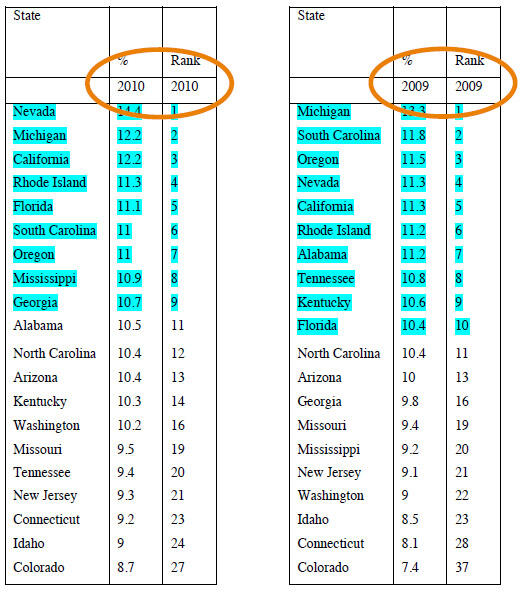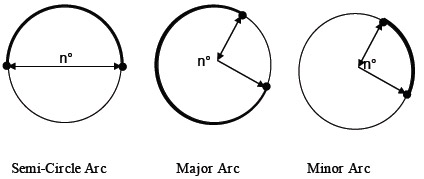Combinations and Permutations
Combinations and permutations are ways of counting the number of ways to arrange a number of objects.
With permutations, the order in which the components are arranged matters. With combinations, the order in which the components are arranged does not matter.
Let's look at examples of each. If we have four books (fiction, biography, photography, education) and four spaces on a shelf, how many different ways can we arrange the books?
This is a permutation because the order in which we arrange the books on the shelf matters.
For the first position on the bookshelf, there are four different books to choose from. For the second position on the bookshelf, there are three different books to choose from (since one book is already occupying the first position). For the third position, there are two books to choose from. For the last position, there is one book remaining.
Total = 4 × 3 × 2 × 1
In case you are curious, this type of multiplication has a name. It is called factorial and is represented by an exclamation point (!).
4! = 4 × 3 × 2 × 1 = 24
Therefore, there are 24 different ways to arrange the four books on the shelf. In general, the formula for permutations of n objects taken n at a time is:
P = n!
You may also see 5! written as 5 × 4!. So if you have 10! ÷ 9!, you can simplify the calculation:
Cancel the 9! and we get:
10! / 9! = 10
What about 12! × 3! / 11! × 2!?
Since 12! = 12 × 11 × 10 × 9 × 8 × 7 × 6 × 5 × 4 × 3 × 2 × 1 = 12 × 11!, we get:
We can cancel the 11!, and:

By the way, 0! = 1.
What if the four books are competing for only two places on the shelf? Again, the order in which the books are arranged on the shelf is important.
For the first position on the bookshelf, there are four different books to choose from. For the second position on the bookshelf, there are three different books to choose from (since one book is already occupying the first position).
Total = 4 × 3 = 12
Or we can use the general formula:
Where n = total number and r = number taken. In the case of four books competing for two spots on the bookshelf, n = 4 and r = 2.
Permutation = 4! / (4 - 2)!
= 4! / 2!
= 4 × 3 × 2 × 1 / 2 × 1
= 24 / 2
= 12
There are 12 ways to arrange four books in two spots on the bookshelf.
Let's look at another example. Four students take a test, and the teacher wants to know how many ways the students can receive first place. Since there is only one place, order does not matter in this example (there is only one place, and therefore only one order). Hence, this is a combination, not a permutation.
Only one of the four students can be selected for first place. Therefore, there are four different ways the teacher can award first place, i.e., four different students from which to choose.
Of course, this is an overly simple example, but it should give you an idea of the differences between combinations and permutations.
For a more appropriate example of combinations, what if the four books were randomly put into two boxes? Since the books are "thrown" into the boxes without any regard to arrangement, the order does not matter. Let's label the books as f, b, p, and e and put them in Box 1 and Box 2.

Labeling the books, all of the different ways we can place the four books in two boxes are:

Notice that having f and b in Box 1 is the same as having b and f in Box 1 because order does not matter. The same is true for Box 2. In this case there are six different ways to throw four books into two boxes. Each combination of book has a corresponding combination in the other box, but we only count one.
The general formula for combinations (order does not matter) is:
where n = total number and r = number taken. In this case, n = 4 and r = 2, because we select 2 objects of the 4.
Combination = 4! / 2! × (4 - 2)!
= 4! / 2! × 2!
= 4 × 3 × 2 × 1 / 2 × 1 × 2 × 1
= 24 / 4
= 6
Let's work through another example to drive this home.
Your boss asks you to work on a new project. She needs two of the six employees to go to Taiwan for a three-week business trip. The two people who are chosen will do the same type of work. How many different groups of two can be chosen?
Since the two people chosen will be doing the same type of work, the order does not matter. This is therefore a combination, and we know that n = 6 and r = 2, which gives us:
Combination = 6! / 2! × (6 - 2)!
= 6! / 2! × 4!
= 6 × 5 × 4 × 3 × 2 × 1 / 2 × 1 × 4 × 3 × 2 × 1
= 720 / 48
= 15
However, if the problem is slightly changed, the answer changes.
Your boss asks you to work on a new project. She needs two of the six employees to go to Taiwan for a three-week business trip. One person will be the leader and manage the project, and the other will assist. How many different groups can be chosen?
Order matters in this example because the leader and assistant have distinct roles. This is a permutation, and we have:
Permutation = 6! / (6 - 2)!
= 6! / 4!
= 6 × 5 × 4 × 3 × 2 × 1 / 4 × 3 × 2 × 1
= 720 / 24
= 30
Since the first and second person selected have different roles (leader and assistant), there are 30 different groups that can be chosen for the Taiwan business trip.
More Practice from the GMAT® Review 13th Edition: Questions 100, 120, 161, 168